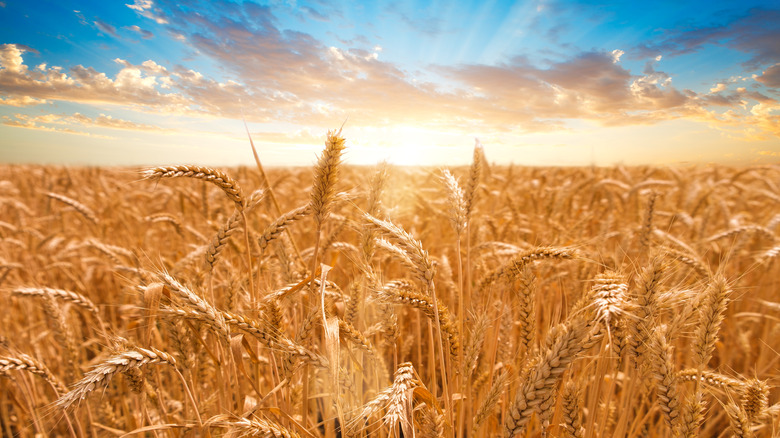How The War In Ukraine Is Impacting Wheat Prices
Consumers across the world have been keenly aware for some time now that prices have been increasing. From disruptions of the production process due to COVID-19, to supply chain issues causing delays, many products are in low supply and come at a high cost thanks to the overwhelming demand for them. Unfortunately, the invasion of Ukraine means you can add wheat-related products to the ever-increasing list of items experiencing a shortage. According to The Wall Street Journal, Ukraine's wheat crops are at risk due to the Russian invasion and uncertainty of the country's future.
The three biggest exporters of wheat are Russia, the United States, and Canada (via Worlds Top Exports). Combined, these three countries are responsible for roughly 46% of the world's total wheat exports, according to 2020 data. But Ukraine is also a top five contributor. France produces just over 10% of the world's wheat while Ukraine's crops produce 8% of the wheat supply — a $3.6 billion industry for the country.
What the future of Ukrainian wheat could look like
According to the The Wall Street Journal, 12% of wheat for global exports are at stake in Ukraine. With a rather significant portion of the world's wheat supply affected, it should be no surprise that the price of the crop is set to skyrocket. Wheat futures in the Chicago trade market have already increased by 12%, and prices for European wheat have jumped by 15%. But the price of the existing wheat is not the only concern. Prices will likely increase based on the degree to which Ukrainian crops for this year are lost (via The Wall Street Journal)
Farmers in Ukraine have already sown their fields for 2022. At this time of year, the country typically exports 700,000 metric tons of wheat. But due to the Russian invasion, much of the population has been forced to flee. And without any farmers in the Ukrainian countryside, there is no one to tend, fertilize, and protect those crops from insects and animals as they grow over the coming weeks. Should the conflict continue and the crops go to seed, chances are this isn't the first price hike of wheat will see in 2022.

